27/03/23
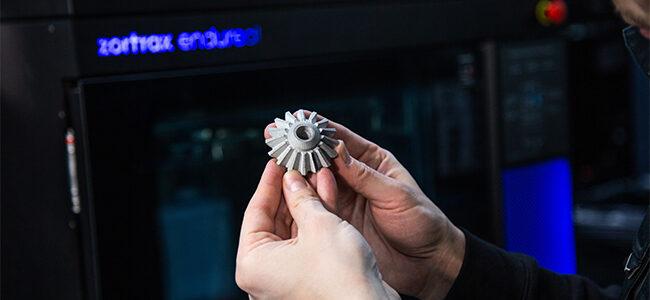
3D printing technology is commonly used in automotive industry with nearly all major manufacturers having additive manufacturing systems already implemented at factories and design centers. Below is a brief overview of the most widespread 3D printing materials used at both prototyping and manufacturing stages in an automotive product cycle.
Z-ABS is a 3D printing filament compatible with nearly all Zortrax extrusion-based 3D printers like the M200 Plus, M300 Plus, or M300 Dual. The material is based on standard acrylonitrile butadiene styrene which is one of the most popular plastics in use today.
Because the material is so widespread and can be processed by nearly all 3D printers, it is one of the most cost-efficient options for making 3D printed parts. This is why multiple automotive manufacturers like Toyota print their early prototypes out of Z-ABS. This way, multiple iterations of a design can be made in a budget-friendly manner. Moreover, there are cases where Z-ABS thermal and mechanical properties are enough for end-use parts. One example from Toyota’s factory in Poland is a valve lever cover used to hold valve levers in place when the engine is moved from one assembly line to another. According to Toyota engineers, the lifespan of this jig made with Z-ABS on the Zortrax M300 Plus 3D printer can be as long as 6 months.
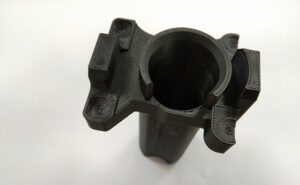
BASF Ultrafuse® PP GF30 is a polypropylene reinforced with 30% of glass fiber. It is one of the most used polymers in cars – nearly all under the hood components in almost every vehicle are made with it. To deliver the capability to 3D print with PP GF30 Zortrax partnered with BASF, one of the largest chemical companies in the world, to calibrate their BASF Ultrafuse® PP GF30 filament on the Zortrax M300 Dual 3D printer.
Parts 3D printed on the Zortrax M300 Dual with BASF Ultrafuse® PP GF30 can operate in the same range of temperatures as the molded PP GF30 components installed as stock in most cars. The material retains its properties in freezing cold exceeding -20 ºC and in heat reaching 120 ºC. That is why an automotive part 3D printed with BASF Ultrafuse® PP GF30 can safely endure in a vehicle left outside in winter without becoming excessively brittle and withstand high temperatures under the hood when the engine is running.
Such properties enable using parts 3D printed with BASF Ultrafuse® PP GF30 in multiple scenarios. At the prototyping stage, such parts can be used in demo cars and even in short-series, pre-production vehicles used for long-range and environmental tests. At the manufacturing stage, BASF Ultrafuse® PP GF30 can be used to 3D print production jigs and fixtures that need to retain their high rigidity in a wide range of temperatures. Smaller workshops can also use this material to 3D print spare under the hood components that are no longer in production or are unavailable for other reasons.
Elastomeric resins are mainly used at the manufacturing stage in the automotive industry. Rubber-like components serve as replacement robotic arm grippers and bumpers preventing the machinery from damaging the surfaces of manufactured parts. 3D printing such parts as robotic grippers with an elastomeric resin is an efficient and quick manufacturing method.
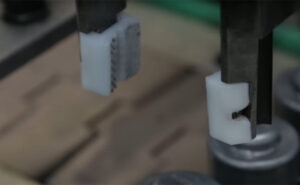
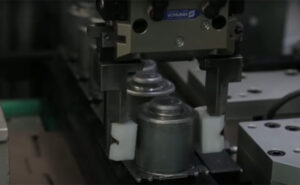
The material has a rebound resilience measured at 21% and low Shore hardness standing at 75 A. The key advantage of BASF Ultracur3D® EL 60 is that it has very low compression set over time which means 3D printed grippers and bumpers retain their geometry for longer.
BASF Ultracur3D® EL 60 is calibrated on the Zortrax Inkspire 2 resin UV LCD 3D printer and the quality of parts 3D printed with it has been validated in a stringent, two-stage process by both Zortrax and BASF engineers. This combination enables manufacturing of flexible, rubber-like parts with incredible precision and speed offered by the Inkspire 2.
VICTREX AM™ 200 is one of the most innovative high-performance polymers on the market. It belongs to the same family of polyaryletherketones (PAEK’s) as Z-PEEK, an incredibly resilient material used by space industry and has been designed from the ground-up for extrusion-based 3D printing. With continuous use temperature (CUT) nearing 260 ºC, excellent resistance to chemicals, and tensile strength exceeding 70 MPa, the AM™ 200 can be used in multiple challenging environments. Its key advantage over other high-performance polymers is extremely good interlayer adhesion which significantly reduces anisotropy of 3D printed parts. Tensile strength measured in the Z axis, which is always the weakest in parts made on extrusion-based 3D printers, reaches 60% of the tensile strength measured in the strongest XY axis in parts 3D printed with VICTREX AM™ 200.
The AM™ 200 is calibrated to work with the Zortrax Endureal, the largest industrial 3D printer made by Zortrax. While this makes the capability to 3D print with the AM™ 200 more of an investment than using desktop-class machines and materials, it certainly pays for itself if the use-case calls for higher level of performance. Moreover, the Zortrax Endureal 3D printer can also 3D print metal components, which is covered in more detail below.
3D printing with metals in automotive industry can serve multiple purposes. The most extreme is 3D printing end-use parts for production-level high-end vehicles like Bugatti, which successfully tested a topologically optimized brake caliper 3D printed in one piece out of titanium. More widespread applications for 3D printing metals, however, involve parts for prototype demo cars and end-use production jigs. After intricate post-processing stage, parts 3D printed with BASF Ultrafuse® 316L turn into standard solid stainless 316L steel. This steel can be polished, welded, and otherwise processed like standard metal. Since 316L steel is often used to make decorative elements in car interiors, the material can be used to make prototype interior components for early-stage prototype vehicles. It is also strong enough for mechanical components.
At the manufacturing stage, the material can be used to 3D print custom tools or jigs used at the assembly line. Especially in case of small-size, intricate parts, 3D printing technology proves to be more cost-effective than using 5-axis CNC machines. Zortrax approach to 3D printing metals relies on using the Zortrax Endureal to print a filament made with 20% of polymer filler and 80% of metallic powder. Such parts, after 3D printing is done, are then sent to specialized service providers that run them through two stages of elaborate post-processing. The first stage, called debinding, uses high temperature and chemicals to remove the polymer filler from the 3D printed part. The second stage is called sintering and its goal is to fuse the remaining metallic powder into solid steel. While this process necessitates a slightly longer lead time than in case of polymers which can be post-processed in-house, in most cases it still is faster and more cost-efficient than commissioning the part manufacturing to external providers using 5-axis CNC machines.
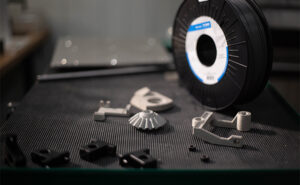
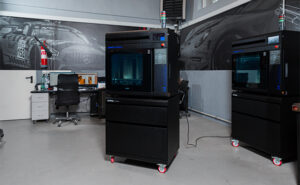
There are way more materials that can be used in automotive applications in Zortrax range which could not be covered here. Go ahead and contact our Sales Representative to discuss your needs and we will suggest most feasible 3D printing solutions tailored specifically to your business case.